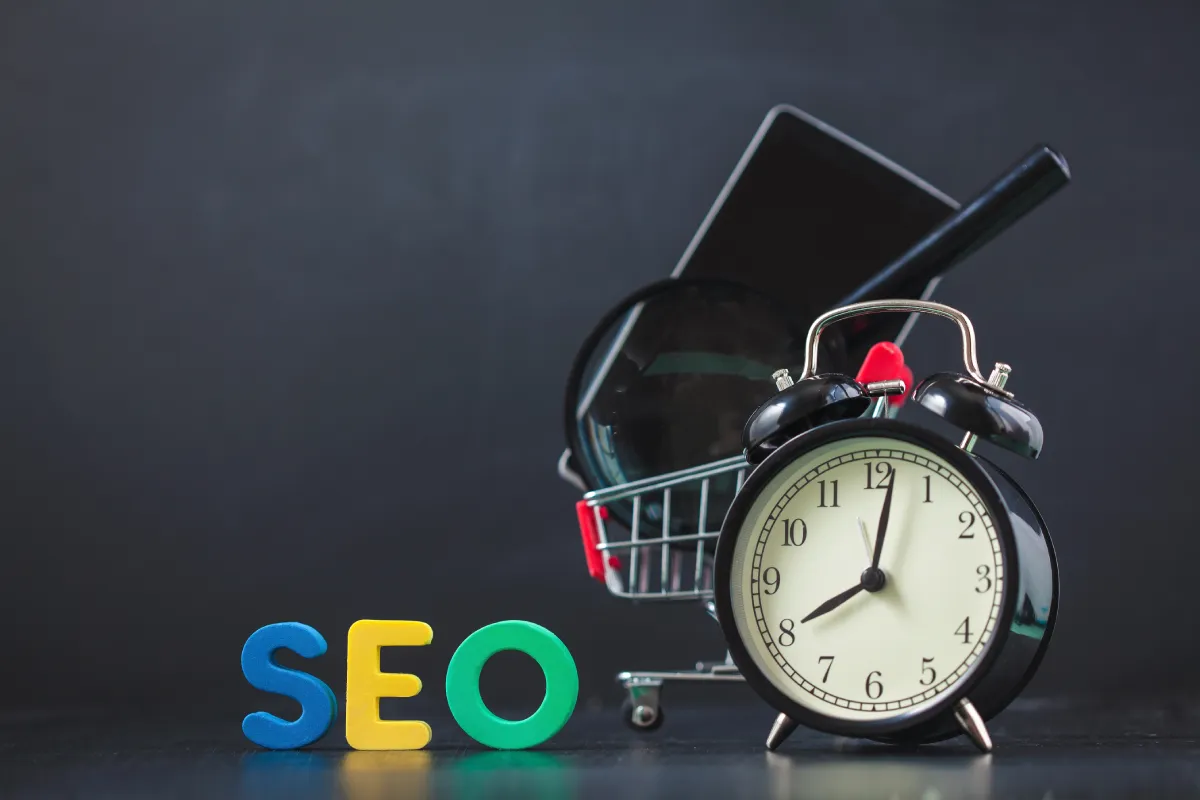Top 5 Ecommerce SEO Tips Every Online Retailer Should Know
Organic traffic can result in organic sales growth, as visitors are more likely to become your paying customers when they easily find what they’re looking for.
Moreover, SEO helps e-commerce businesses build long-term sustainability as it lessens the need for paid advertising and other costly marketing tactics. All you need is to consistently optimize your e-commerce website for search engines and you can enhance brand visibility and customer trust, establish a strong online presence, attract qualified leads, and ultimately drive revenue growth. To achieve this, partnering with an Ecommerce SEO agency can help you fine-tune your strategies for maximum impact.
While the benefits of SEO for e-commerce websites are manifold, there are best practices you need to follow to enjoy these benefits to the fullest. In this article, we will give you five tips to help you with your e-commerce SEO strategy.
Top 5 SEO Tips for Ecommerce Sites
1. Consider buyer intent when doing keyword research.
When doing your keyword research, don’t just focus on the most popular keywords used in your industry. You need to consider buyer intent, which relates to a potential customer’s intention behind their search query.
But how do you identify keyword intent? The key is to look at the specific terms and phrases that search engine users type into the search box when looking for answers online. And, according to Backlinko, 99% of all search phrases and terms fall under four intent categories: informational, commercial, navigational, and transactional.
With informational keyword intent, the searches contain factual queries or questions like “How do I…?” and “What are the strategies for…?” In these cases, the user wants more details about a particular subject.
When it comes to commercial keyword intent, the user knows what they want but doesn’t know where to find it. So, they may type in search phrases like “Find deals for…” People who use commercial keywords want to investigate products, brands, or services and typically have the intent to purchase.
With navigational intent, searchers want to find a specific site or page. So they may type in phrases like “Porto Theme Blog Ethical AI” or “Twitter login.”
Users with transactional intent want to complete an action, like making a purchase. They may use the phrase, “Buy groceries online” or “Book NYC hotel.”
Sure, people use other types of keyword categories in SEO. However, analyzing keywords based on search intent is helpful because it enables you to understand how to compete on SERPs. The intent assigned to a keyword lets you know whether the user is looking to purchase something soon or is just trying to gather information.
To determine keyword intent, there are various keyword tools you can use, including Google’s keyword planner and Ubersuggest.
2. Optimize product pages for better ranking.
You can attract potential customers and perhaps even convert them into paying ones by using on-page optimization techniques. For example, if you sell tactical gear, you can optimize your product descriptions by writing keyword-rich descriptions, adding calls to action or CTAs, including testimonials, and adding high-quality unique images. You can focus your efforts on the areas of your e-commerce site that are most important to your business, such as your product descriptions, your images, and your reviews.
You can optimize your product descriptions, for example, by writing keyword-rich descriptions, adding calls to action or CTAs, including testimonials, and adding high-quality unique images.
Meanwhile, you can optimize your images by choosing suitable images in appropriate sizes, including ALT tags in your captions, and using the correct keywords in file names.
Reviews, on the other hand, can help potential customers decide whether to avail of a product or service from you. They will help you build trust with your customers and gain conversions. So encourage your current customers to leave reviews by sending them automated messages whenever they buy something from your site.
3. Prioritize user experience.
When it comes to e-commerce websites, you must pay attention to user experience (UX). By prioritizing great UX in your SEO strategies, you can create an e-commerce site that attracts organic traffic and provides a seamless and enjoyable shopping experience for your customers.
Good UX, however, involves multiple factors or strategies, which include the following:
Easy Navigation
To ensure a good UX for your e-commerce site visitors, you need good web design. And good web design is not just about making your site visually appealing, but also ensuring that it is user-friendly.
Start by optimizing your e-commerce site’s navigation and structure. Make sure it is easy for users to navigate, with clear and intuitive menus that allow them to find your products and services quickly and efficiently. Organize your products into categories and subcategories that make sense and are logical, and include descriptive and keyword-rich anchor text for internal links to improve SEO and guide users through your site.
Source: Unsplash
Fast Page Speed
The speed at which your pages load is an important ranking factor. And that’s because users are simply not going to wait around while your website loads.
You can optimize your website’s loading speed by compressing the images, minimizing code, and leveraging browser caching, as faster load times not only enhance user experience but also improve SEO rankings.
High-Quality Web Content
Focus on creating high-quality, SEO-optimized content throughout your site. Write compelling product descriptions that incorporate relevant keywords naturally and provide valuable information to potential customers. Improve readability and user engagement by using headings, bullet points, and bold text to break up content and make it easy to scan. Make sure that ads don’t interfere with the user’s view of your site’s content.
It is also important that you regularly update your website with fresh content, such as blog posts, buying guides, and customer reviews, to keep users engaged and encourage return visits. The best way to keep track of and manage your content is by using reliable content management systems.
4. Optimize your site for long-tail keywords.
Long-tail keywords are terms or phrases that are more specific than generic or short-tail keywords and they usually include details or descriptions of what users are looking for. For instance, “books” is a short-tail keyword, while “best story books for toddlers” is a long-tail keyword. Long-tail keywords are usually found on the right side of the page on SERPs.
Long-tail keywords typically have low search volume and are less competitive. But they are still relevant to your business and they usually convert well because they represent exactly what a user is looking for. And despite having low search volume, these keywords tend to generate higher traffic volumes to e-commerce sites. Ecommerce SEO companies specialize in identifying and optimizing for long-tail keywords that align with your products and target audience. By leveraging these companies’ expertise, you can enhance your website’s visibility in search results, attract qualified traffic, and increase conversion rates, ultimately leading to higher revenue.
5. Build Backlinks and Online Reputation
Another important aspect of e-commerce SEO is link building, which involves getting backlinks from other websites to your e-commerce website. When other sites insert links in their content to your content, that means they find you credible as a source of information or that you are an expert in your field.
You can acquire high-quality backlinks by creating high-quality content that other relevant and authoritative websites will want to link to. You can also contact or reach out to other websites and request backlinks. Some websites also have link exchange programs that you can join. Yet another option would be to use social media to promote your e-commerce content and attract backlinks.
The Bottom Line
Implementing SEO tips is essential for your online retail business. It improves your website’s visibility, attracts more organic traffic, and ultimately drives sales. By considering buyer intent, optimizing product pages, optimizing long-tail keywords, and building backlinks, you can enhance your site’s chances of appearing higher in search engine results pages when potential customers are actively searching for products or services that you happen to offer.
Moreover, creating a user-friendly website with intuitive navigation, fast loading speeds, and high-quality content improves the overall browsing experience of your site visitors. This, in turn, encourages them to stay longer and explore more pages and products.
Once you have implemented these strategies, make sure to continuously monitor and refine them so your site stays competitive in the ever-evolving online marketplace amidst constantly changing search engine algorithms and user behaviors. By regularly analyzing website performance, monitoring keyword rankings, and adapting SEO tactics accordingly, you and other online retailers can ensure that your e-commerce website remains visible, relevant, and successful in driving organic traffic and conversions.
Additionally, if you’re looking to unwind after a productive day of e-commerce management, you can Play Free 3 Card Poker Game Online for a relaxing break.


Leave a Reply